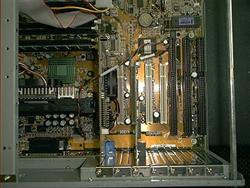 Learn about Computer networks; what they are, their component parts, the various configurations that are possible and what they can do. This course lays a foundation in a way that will enable you to better plan and manage computer networks.
Learn about Computer networks; what they are, their component parts, the various configurations that are possible and what they can do. This course lays a foundation in a way that will enable you to better plan and manage computer networks.
It is designed for the office manager, or I.T. professional who has limited knowledge of networks; and needs a more solid foundation in order to build their knowledge, skills and ability to work with networks.